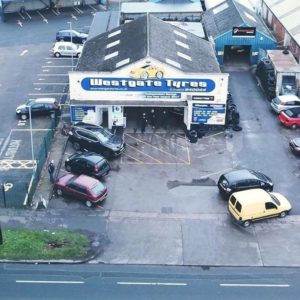Preston is the administrative centre of Lancashire, on the north bank of the River Ribble.
The City of Preston local government district obtained city status in 2002. Indeed, this is when it become England’s 50th city in the 50th year of Queen Elizabeth II’s reign. Preston has a population of 114,300, the City of Preston district 132,000 and the Preston Built-up Area 313,322. The Preston Travel To Work Area, in 2011, had a population of 420,661 compared to 354,000 in the previous census.
Preston is the seat of Lancashire County Council, houses the main campus of the University of Central Lancashire (UCLan) and is home to Preston North End F.C., a founder member of the Football League and the first English football champions.
Preston and its surrounding area have provided evidence of ancient Roman activity. Indeed, this is largely in the form of a Roman road which led to a camp at Walton-le-Dale. The Angles established Preston; its name is derived from the Old English meaning “priest’s settlement” and in the Domesday Book is recorded as “Prestune”. In the Middle Ages, Preston was a parish and township in the hundred of Amounderness. Furthermore, it was granted a Guild Merchant charter in 1179, giving it the status of a market town. Textiles have been produced since the mid-13th century when locally produced wool was woven in people’s houses. Flemish weavers who settled in the area in the 14th century helped develop the industry.
In the early-18th century, Edmund Calamy described Preston as “a pretty town with an abundance of gentry in it, commonly called Proud Preston”. Additionally, Sir Richard Arkwright, inventor of the spinning frame, was born in the town. The most rapid period of growth and development coincided with the industrialisation and expansion of textile manufacturing. In fact, Preston was a boomtown of the Industrial Revolution. Indeed, becoming a densely populated engineering centre, with large industrial plants. The town’s textile sector fell into terminal decline from the mid-20th century and Preston has subsequently faced similar challenges to other post-industrial northern towns, including deindustrialisation, economic deprivation and housing issues.
Preston has many claims to fame, a number of which are “firsts”. From being home to the tallest spire of any parish church in England to having the longest continuous row of red telephone boxes, the city hides an abundance of quirky and interesting facts.
Preston’s origins can be traced back to the Roman period, with evidence of a Roman road running through the town. The famous Cuerdale Hoard was also discovered near Preston, showing evidence of Viking activity after the Romans. The hoard is one of the largest Viking silver hoards ever found.
In 1179 Preston’s first Royal Charter was granted by Henry II conveying the right for the town to have a Guild Merchant. Celebrations, known as the Preston Guild, have since been held every 20 years; with Preston being the only place to still hold these celebrations today. The first recorded celebration of the Preston Guild was held in 1397, when it was already 200 years old.
The first town outside of London to be lit by coal gas
In 1816 Reverend Joseph “Daddy” Dunn, of St Wilfrid’s Parish in Preston, created an improved gas lighting technique through chemical experiments. Joseph rapidly changed the whole of Lancashire by transporting the cool-gas lighting into the area as well as throughout the UK. By the mid 1800s, Preston became the second town in England after London to be fully lit by coal gas, making it the first provincial town in England to be lit this way. When laying the pipes for the lighting process some pipes were created from surplus musket barrels to save money.
Joseph’s Preston Gaslight Company offices were located in Avenham. You can see the first building in Preston to be lit by coal gas on the Preston Blue Plaque Trail.
Where the word “teetotal” was born
Joseph Livesey started the Temperance Movement in Preston in 1832. The followers of the movement were required to sign a pledge of total abstinence. Livesey’s first pledge was drawn up in Preston at “The Old Cock Pit”.
The term “teetotal” is derived from a speech made in Preston by Richard Turner, who was a follower of Livesey. It is said Richard Turner had a speech impediment and during his speech urging total abstinence from all alcohol, rather than just the abstinence of spirits, he remarked “they must insist upon tee-tee-tee total abstinence”.
You can see where the first pledge was drawn up on the Preston Blue Plaque Trail.
Inspiration for Charles Dickens
It is believed that Charles Dickens’ novel “Hard Times” was inspired by his time in Preston. The writer travelled to Preston in 1854 during the Great Lock Out. The strikes saw 26,000 workers put out of work and made headlines across the country as a struggle of the cotton workers against the Preston Cotton Masters.
Dickens stayed at the Bull & Royal Hotel on Church Street, along with many other notable names. The Bull & Royal can be seen on the Preston City Heritage Trail.
Home to Britain’s first motorway
The Preston By-pass was Britain’s first motorway. It was conceived, promoted, built, and initially operated by its engineer James Drake. The by-pass was opened on 5 December 1958 by the Prime Minister Harold MacMillan. It later became part of the M6 motorway.
The first Kentucky Fried Chicken
In 1965 Ray Allen opened the UK’s first Kentucky Fried Chicken store on Fishergate High Street, Preston. Ray met Colonel Harland Sanders in 1963, securing the famous American’s fast food rights for his secret fried chicken recipe for the UK.
The arrival of KFC in the UK came almost a decade before McDonald’s, Burger King, and Pizza Hut.
The tallest spire in England
St Walburge’s Church boasts a towering 309ft spire. The spire is the tallest of any Parish church in England and the third tallest of any church in the UK, with only the spires of Salisbury and Norwich Anglican Cathedral reaching higher.
The church was built in the mid-19th century and was designed by Gothic Revival architect Joseph Hansom, who was also the designer of the Hansom cab.










